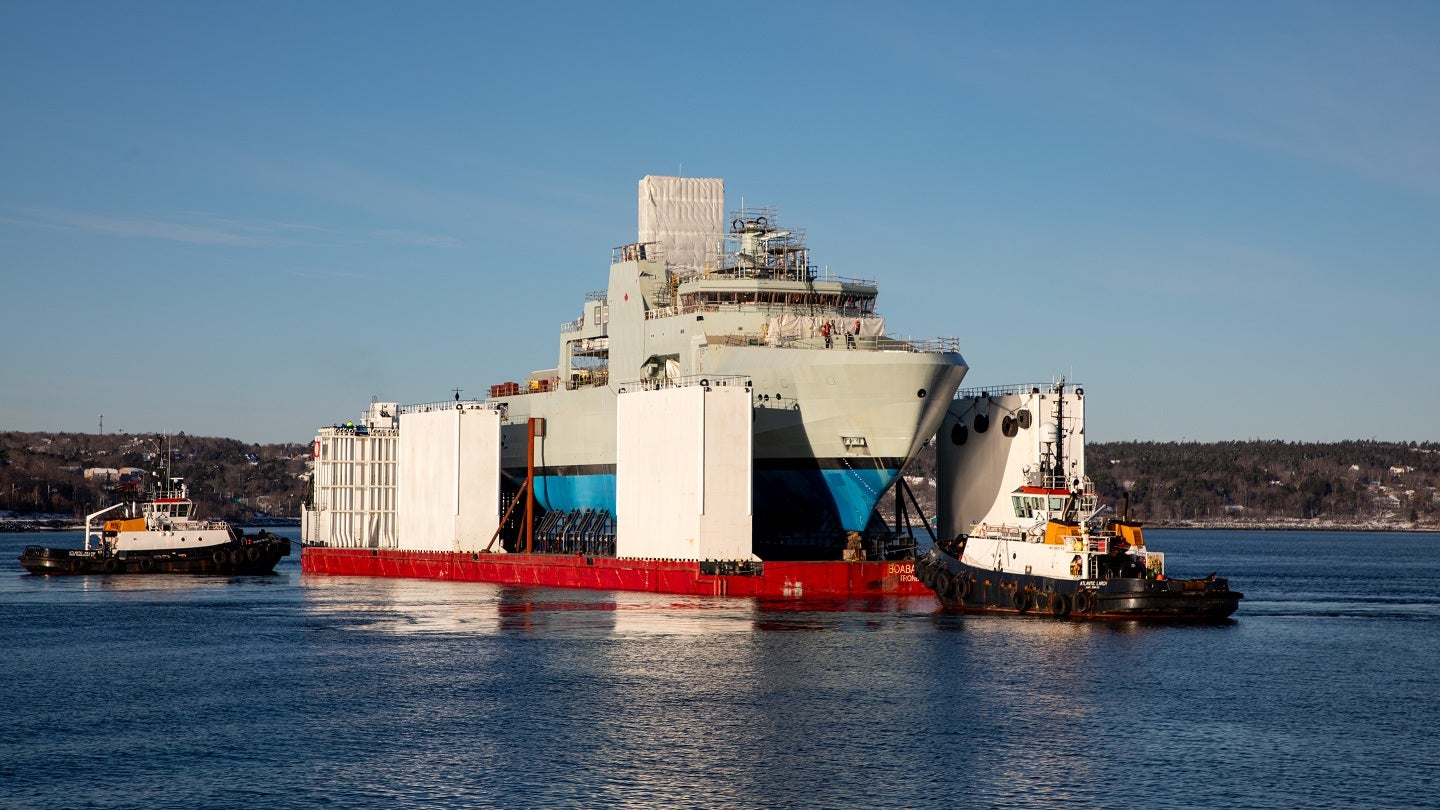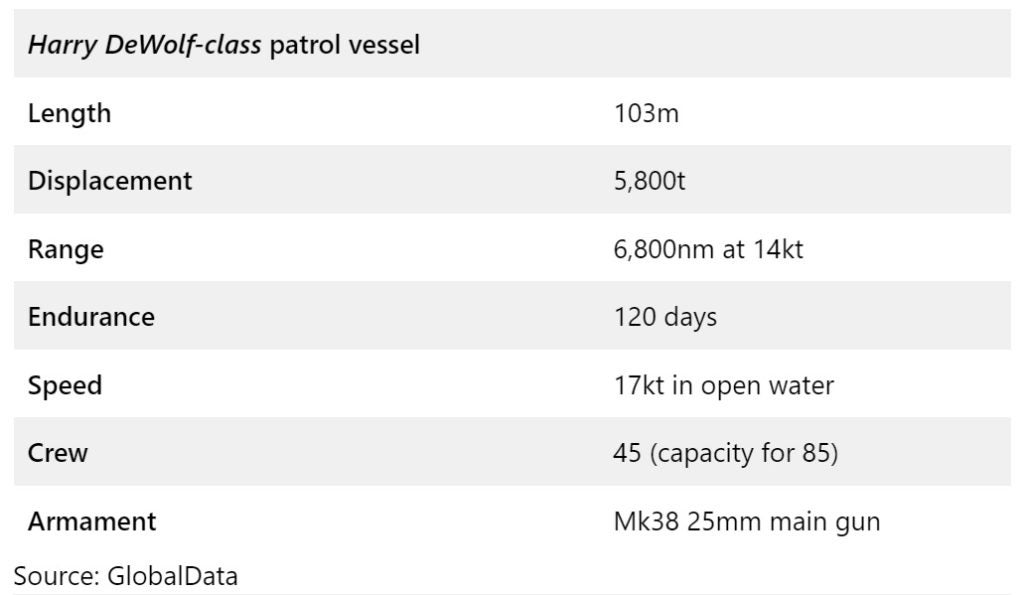
The launch of the fifth of a planned six Arctic and Offshore Patrol Ships (AOPS) for the Royal Canadian Navy (RCN) in early December marked the latest milestone of a programme intended to provide a boost to Canadian shipbuilding as well as improve Arctic capabilities.
Taking place on 9 December 2023, the launch of the future HMCS Frédérick Rolette took place at the Halifax Shipyard in Halifax, Nova Scotia, and was performed two months ahead of schedule, according to ship manufacturer Irving Shipbuilding. The 103 metre (m) long vessel was loaded onto a to a submersible barge on 8 December and launched in the Bedford Basin the following day.
Outfitting and other work will continue pier side at Halifax in preparation for sea trials and handover to the RCN in September 2024.
Inside Halifax Shipyard’s facilities, the Royal Canadian Navy’s sixth and final AOPS, the future HMCS Robert Hampton Gray, and the first AOPS variant for the Canadian Coast Guard were also under construction.
The build is part of a national programme to deliver six AOPS for the Royal Canadian Navy, two AOPS for the Canadian Coast Guard, and 15 Canadian Surface Combatant ships for the Royal Canadian Navy as part of the country’s national shipbuilding strategy.
According to the Canadian Government, the sixth and final RCN AOPS will be delivered in 2025, with Ships 7 and 8, intended for the Coast Guard, following in 2026 and 2027 respectively.
AOPS: designed specifically for the Arctic
In 2015 the Canadian Government and Irving Shipbuilding signed a $2.3bn contract for the construction of six AOPS, as part of the National Shipbuilding Procurement Strategy (NSPS), to be built by prime contractor Irving Shipbuilding at its Halifax Shipyard.
The hull of the Harry DeWolf class is designed to meet the International Association of Classification Societies Polar Class 5+ requirements to enable Arctic operations.

The vessels are lightly armed and relatively slow at under 20 knots, however, their role is intended to provide maritime security and Canadian presence in the Arctic region, where open-water sprint speeds are not as critical as having ice-capable platforms. By design, the vessels are able to operate through sea ice up to 1m thick.







